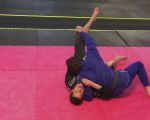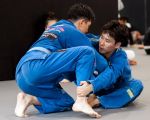Effective BJJ Drills for Preventing Injuries: Essential Techniques for Safety
- Introduction to BJJ and Injury Prevention
- Top BJJ Drills to Enhance Flexibility and Strength
- Injury Prevention Techniques for Beginners
- Advanced BJJ Techniques for Preventing Injuries
- BJJ for Long-Term Safety: How to Maintain Healthy Practices
Introduction to BJJ and Injury Prevention
Brazilian Jiu-Jitsu (BJJ) is a martial art that focuses on grappling and ground fighting. While BJJ is known for its efficiency in self-defense and sport, like any physical activity, there is a risk of injury. However, with the right techniques and drills, BJJ can be a safe and effective way to improve physical fitness while minimizing the risk of injury.
Top BJJ Drills to Enhance Flexibility and Strength
To prevent injuries in BJJ, it’s essential to enhance both flexibility and strength. Incorporating regular flexibility exercises and strength-building drills will help your body adapt to the physical demands of BJJ. Key drills include:
- Bridge and Roll: This drill strengthens the lower back and core, improving your ability to move safely during transitions.
- Hip Escapes: A key movement in BJJ, hip escapes help to create space and maintain safe positioning during scrambles.
- Armbar Preparation: Practice the armbar technique slowly to build joint stability and increase muscle strength, ensuring the joints stay safe.
Injury Prevention Techniques for Beginners
For beginners in BJJ, it’s crucial to understand the basic principles of injury prevention. One of the most important aspects is knowing when to tap out. Avoid pushing yourself past your limits, and always tap early if you feel discomfort in a submission hold. Additionally, ensure that you are practicing proper warm-ups and cool-downs to prepare your body for intense movements.
Advanced BJJ Techniques for Preventing Injuries
For more advanced practitioners, injury prevention becomes even more critical as you begin to train with higher intensity. Focus on the following:
- Posture Control: Proper posture in guard positions can help avoid excessive strain on your joints and prevent injuries during scrambles.
- Leverage and Technique: Ensure that you are using proper leverage and technique rather than relying on strength to execute submissions or escapes.
- Controlled Sparring: Sparring with controlled intensity, with the aim of mastering techniques rather than winning, will reduce the chance of injury.
BJJ for Long-Term Safety: How to Maintain Healthy Practices
As you continue to train in BJJ, it’s important to maintain long-term safety. This involves not only doing regular injury prevention drills but also paying attention to your body’s needs. Stay mindful of any pain or discomfort and don’t hesitate to rest if necessary. Regular strength training and stretching, outside of BJJ training, will further help reduce the risk of injury.

































